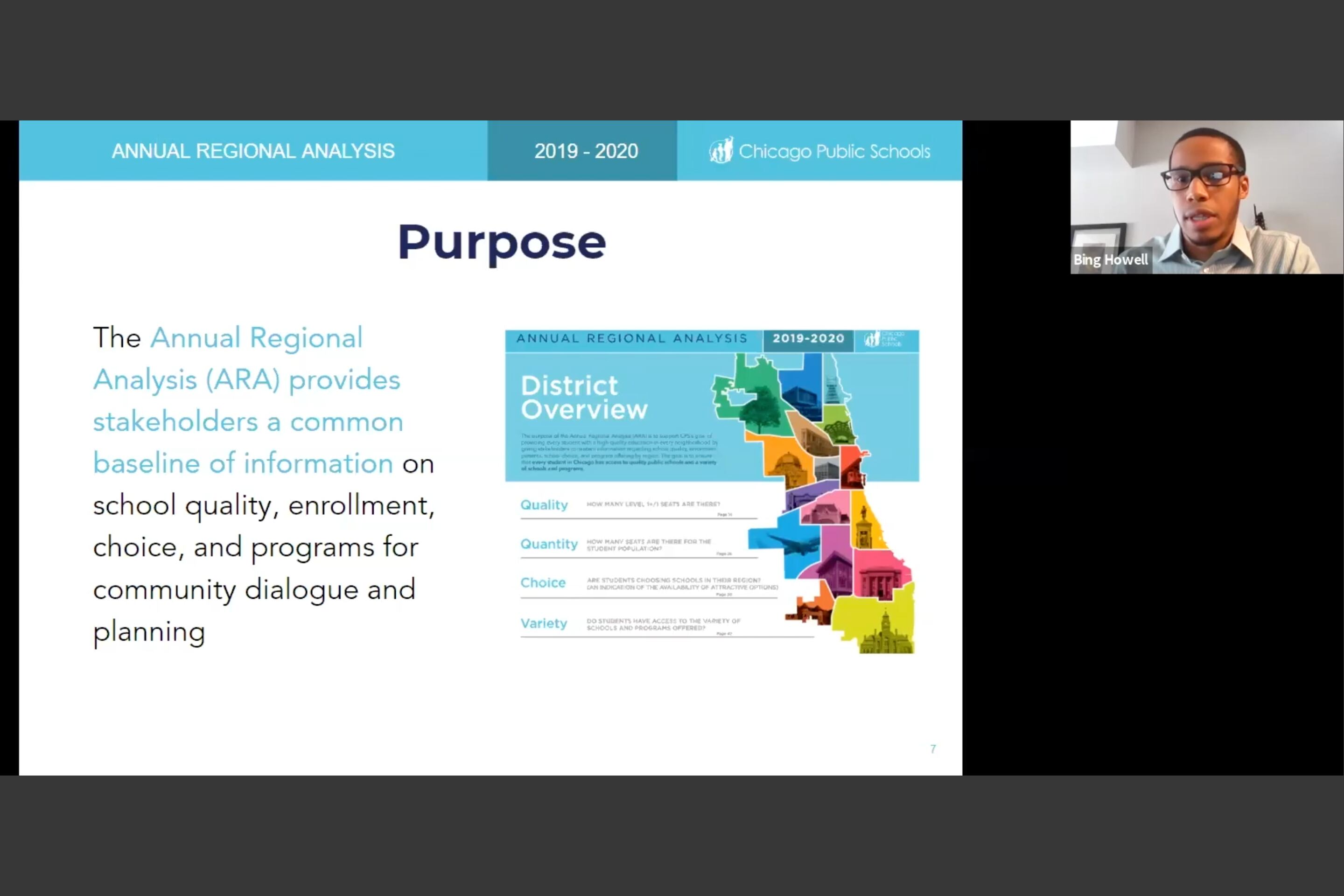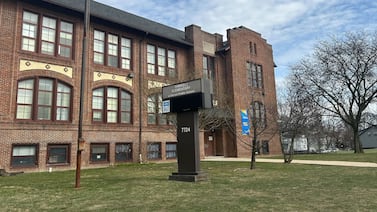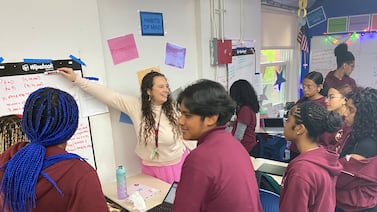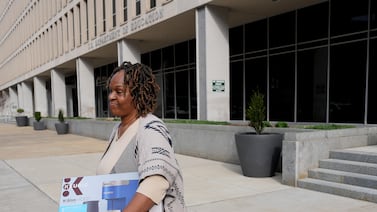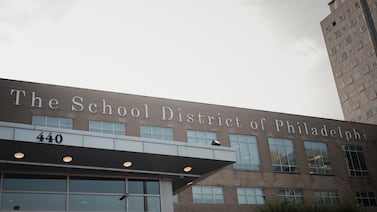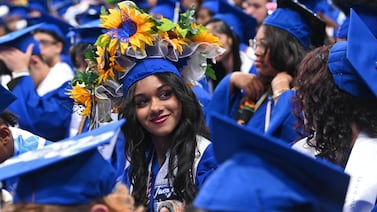Black students in Chicago are less likely to choose their neighborhood schools. They spend the longest time commuting to school. And yet they remain much less likely to attend the city’s top-rated campuses than their white peers.
That’s one key takeaway from the latest installment of an annual report about district enrollment and school choice put together by Chicago Public Schools and Kids First Chicago, an advocacy group. When the report first came out three years ago, some district critics worried that officials would use it to build a case for shuttering shrinking neighborhood schools. District leaders say it has instead ushered in a more transparent era and helped steer coveted programs to the city’s historically under-resourced South and West Sides.
Before the coronavirus pandemic disrupted learning across the country, one of Chicago’s most pressing education problems was how to bolster its neighborhood schools. They have long served critical roles in the fabric of their communities, but many have lost enrollment and resources over time.
In a series of virtual meetings about the report the district hosted this month, community leaders and other residents voiced fresh anxiety about students leaving neighborhood schools. They urged the district to remain focused on the issue even as officials are preoccupied with developing plans to reopen schools during the coronavirus pandemic.
District leaders said they need community input to keep attacking long-standing disparities.
“The goal is a choice of well-resourced schools in each neighborhood,” Bing Howell, the district’s new chief portfolio officer, told participants in one community meeting. “In full transparency, we don’t fully know how to do it all by ourselves.”
It is unclear how the turmoil from the coronavirus outbreak might affect enrollment patterns in the city in the coming year and beyond. During the past four years, a little more than half of Chicago students have consistently chosen to attend a school other than the one they were zoned for. But will the real or perceived safety of sticking closer to home amid a pandemic drive more students to opt for their neighborhood schools?
The enrollment report, called Annual Regional Analysis, or ARA, leans on the district’s school rankings, which Chicago suspended for a year in response to the pandemic. Leaders here have vowed to revisit the rating process in the longer term amid criticism that it penalizes schools serving the city’s neediest students.
“Talking about equity”
The ARA divides the city into 16 regions, from the Far Northwest Side to Greater Calumet, and explores the demographics and school choices of students within each region. Vivian Lee, chief of strategy and operations at Kids First, notes that in high school especially, students continue to travel outside their region to attend school in large numbers.
She said that a bevy of factors play a role: Students and parents often seek out schools with the highest Level 1-plus and 1 ratings from the district; they look for specialized programs such as International Baccalaureate or STEM; and they pay close attention to word of mouth and their friends’ choices.
Also, Lee said, “We live in a segregated city, and we’ve heard parents express that they want diversity in their schools.”
According to the latest report, just more than 40% of Black students attended Level 1-plus or 1 schools this past year, compared to two-thirds of Latinos and more than 90% of white students.
Two years ago, the district launched a competitive process to award funds to schools looking to start sought-after specialized programs. Officials said the ARA data has helped inform that decision-making. The district invested $32 million in 2018-2019 and $18 million this spring to cultivate new IB, STEM, fine arts, language, and other programs.
Although some have criticized the process as pitting schools against each other, officials have argued that it has steered programs and new resources to historically overlooked parts of the city.
On the city’s West Side, for instance, nine new programs have opened, including the first regional gifted magnet and the first IB program.
At one of the virtual meetings to discuss the report’s findings earlier this month, schools chief Janice Jackson acknowledged ongoing concerns about school quality and the availability of attractive programs in some parts of the city. She and other officials said they want to address these issues based on feedback from residents. Howell called the annual report “one of the most transparent data releases in any school district in the country.”
“We want to solve that collectively with you,” Jackson said.
After the officials’ opening remarks, the meeting broke into small groups by region. Participants in the West Side group zeroed in on the numbers for student departures. As it did across the city, enrollment here dipped in recent years, from 41,700 in 2017 to 37,440 last year, and the number of schools ranked as Level 1-plus or 1 declined. And as students continued to travel to schools outside the region, those top-ranked schools were left with thousands of vacant seats.
Keith Muhammad, co-chairman of the West Humboldt Park Citizen Advisory Committee, said some West Side families have become displaced by gentrification and the demolition of public housing; others, including some of his friends, moved to the suburbs because of safety concerns.
School board member Dwayne Truss said for families still living in the area, enrollment decisions often hinge on relationships and word of mouth. Selective enrollment schools outside the area look more attractive than neighborhood schools, he said, because they can offer more programming and student support thanks to their bigger enrollments and thus larger per-pupil funding.
The West Side, one of the city’s most ethnically diverse areas, still needs more investment in student programs, participants agreed — from fine arts to world language to vocational training.
“It’s not the same on the West Side as it is on the North Side, and that’s where I am talking about equity,” said participant Carol Johnson.
Prioritizing communities
After the small group discussions, the community meeting participants reunited to report back about what they’d gleaned from the data. A couple of attendees voiced frustration with the pace of change in the district.
Maretta Brown-Miller, of the Austin Community Advisory Council, said she was tired of looking at data and numbers that seem to tell the same story.
“I feel we keep beating a dead horse,” she said in impassioned remarks. “Nothing has changed on the Richter scale. The disinvestment in the Austin community is there, and I don’t see anyone making any changes.”
Jackson, the district’s CEO, cut in, pushing back forcefully against the suggestion that district leadership had stopped caring about West and South Side schools. She insisted the district is working to reverse a history of disinvestment in those communities despite being hampered by limited resources. She said since the first Annual Regional Analysis came out, the district has added new offerings to Michele Clark Magnet High School, which got an IB program, and other Austin schools.
“The only way we can get there is through a methodical process like what we’re doing,” Jackson said. “We have prioritized those schools and communities you are talking about.”
One participant, Nicholas Wozniak, argued that the district’s school ratings, known as School Quality Rating Policy, or SQRP, have contributed to the challenges of schools in high-need communities, setting off a “vicious cycle” of discouraging enrollment and thus leading to less funding and a loss of offerings.
“CPS needs to hear loud and clear that these ratings have been a failure,” he said.
Lee, of Kids First, said the pandemic has heightened a hunger for information about how well schools are serving students — and made it more challenging to gauge. She said that student participation data the district released this past spring is a start, but parents and educators will be looking for more in the coming months.
“There are definitely questions and fear that kids have fallen behind,” she said.

